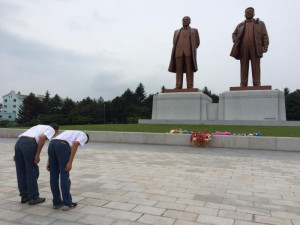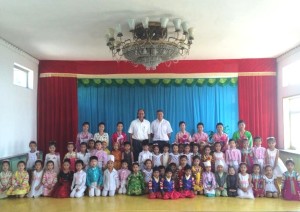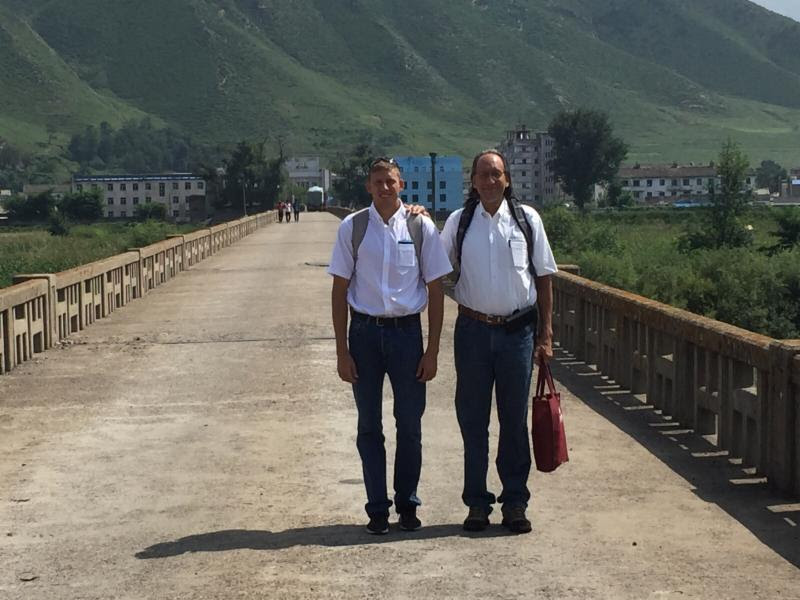By Rachel Neglia
North Korea is a country of paradoxes. It proclaims itself “democratic,” and yet is the most tyrannical state in the world. It names its economic condition “prosperity,” while most would decry it as impoverishment. It asserts independence from the international community, but its very existence depends on foreign aid and tourism. This summer, TPA alumnus Pau Tonnesen and his father, Bill, experienced the many inconsistencies of the “Democratic People’s Republic of Korea” firsthand.
Americans rarely travel to North Korea. According to Koryo Tours, a popular travel agency that services North Korea, Americans comprise only about a quarter of North Korea’s 5,000 to 6,000 western tourists. In fact, the US State Department explicitly warns all who plan to enter the country: “The Department of State strongly recommends against all travel by U.S. citizens to North Korea.” This warning, though daunting, cannot hamper the curiosity of those who have an abiding interest in the country.
“Bill has been reading about North Korea for a couple of years now,” Mrs. Tonnesen explains. “He thinks no other country in the world is as isolated as the DPRK and this is very interesting to him.” When Pau qualified for the 2015 World Track and Field Championships in Beijing, China, he decided to take advantage of North Korea’s proximity, and paid the country a visit.
 The Tonnesens’ journey began in Yanji, China, where they crossed the Tumen River into Tumen City, North Korea. Pau explains that entering the country was “Exciting and scary, almost like walking into a jail cell.” They encountered a security checkpoint, where they were physically searched. “There was security at the entrance and at the exit,” Pau says. “We thought that it was going to be a lot worse than it was… When we got there they just opened our phones, flipped around… They didn’t know what they were looking for.” Despite facing a minor setback when Mr. Tonnesen was found to have a South Korean bank note, they passed the checkpoint and were on their way.
The Tonnesens’ journey began in Yanji, China, where they crossed the Tumen River into Tumen City, North Korea. Pau explains that entering the country was “Exciting and scary, almost like walking into a jail cell.” They encountered a security checkpoint, where they were physically searched. “There was security at the entrance and at the exit,” Pau says. “We thought that it was going to be a lot worse than it was… When we got there they just opened our phones, flipped around… They didn’t know what they were looking for.” Despite facing a minor setback when Mr. Tonnesen was found to have a South Korean bank note, they passed the checkpoint and were on their way.
Throughout their entire stay, the Tonnesens were accompanied by two “minders” – members of the state party responsible for guiding, translating for, and keeping an eye on tourists. According to Mr. Tonnesen, “Their job is to show you what they believe is the best of North Korea… You’re going to stay, within economic reason, in the best possible hotel, eat the best possible food… Everything is done to show you the very best of the country.”
For Pau, the minders’ presence added to the country’s fabricated impression in his mind: “What [the minders] want is money… It makes a huge difference in their lives how much money you give them. While you’re there, they try to act like the nicest people in the world so that you give them money. As soon as I sat down in my bed in my hotel at night, I felt like it was fake… like they were going to try to be nice but then we were going to be arrested…”
On their first night, they stayed in Hoeryeong, in the north of the country.
Mr. Tonnesen explains that the farther north one travels from Pyongyang, the country’s “show city,” the more obvious the widespread impoverishment becomes. “What we found was a kind of pre-industrial country,” he elaborates, “You will travel for hours on the ’highway’ and see zero or one to two cars. You will see 15 to 30 ox-carts.” Tourists are supposed to be shown only the very best of the country, but in the north, where there is no electricity or running water, they gain a more candid view of how the people really live. In fact, the North Korean government has kept the north of the country closed to tourists until only recently due to its underdevelopment. The Tonnesens visited Rason, a special economic zone in the north, but the more prosperous economy there is only due to concentrated foreign investment.
 In Chongjin, the Tonnesens visited an English class at an elementary school. “They told us not to tell the children that we were American,” Mr. Tonnesen says. North Korean propaganda demonizes Americans for its problems, while simultaneously holding that the country has none. In the school’s hallway, for example, was a painting of an American priest “carving ‘thief’ into the forehead of a starving Korean child that stole an apple.” Children are taught to accept this manufactured hatred from their early stages of education; indeed, the entrenchment of the propaganda machine further isolates the country from the international community.
In Chongjin, the Tonnesens visited an English class at an elementary school. “They told us not to tell the children that we were American,” Mr. Tonnesen says. North Korean propaganda demonizes Americans for its problems, while simultaneously holding that the country has none. In the school’s hallway, for example, was a painting of an American priest “carving ‘thief’ into the forehead of a starving Korean child that stole an apple.” Children are taught to accept this manufactured hatred from their early stages of education; indeed, the entrenchment of the propaganda machine further isolates the country from the international community.
Despite experiencing North Korea’s rampant oppression firsthand, the Tonnesens’ goal “was not to tell the people we met how great America was. It wasn’t to tell them how bad their country was. The point was to get out safely.”
Over the past few years, only a handful of tourists have been arrested in the country, but the risk is ever-present. “The most dangerous thing you can do is proselytize,” Mr. Tonnesen says. Apart from that, disrespecting North Korean leader Kim Jong-un can also spell trouble for a visitor. The Tonnesens were constantly reminded of the risk of disrespecting the Kim dynasty, and were even told that they could not fold a newspaper bearing an image of Kim Jong-un.
When asked whether more Americans should visit North Korea, Mr. Tonnesen quickly replies, “No.” Although they should not attempt to travel through the country, however, individuals should undoubtedly seek to learn from tourists who have successfully emerged from North Korea’s façade of freedom and prosperity. By learning from the first-hand testimony of visitors, he said, we can shed at least a little more light on this “heart of darkness.”
